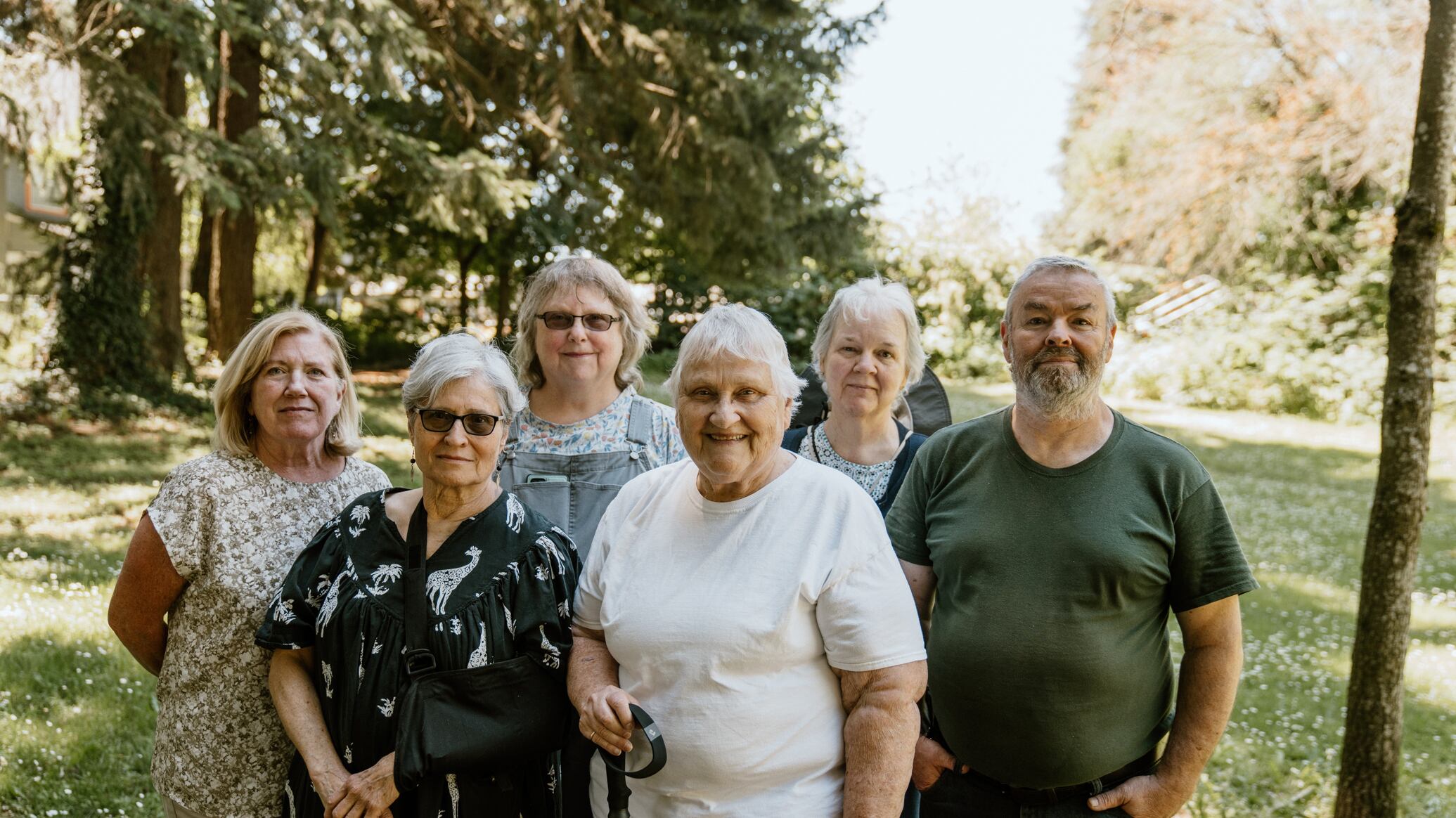To hear the neighbors tell it, the stretch of road in Southeast Portland along which Multnomah County Chair Jessica Vega Pederson used to live was just getting good, and now she may ruin it.
Last summer, the Portland Bureau of Transportation turned the block, and many others between 130th and 174th avenues, into a greenway with new sidewalks, bike lanes, streetlights, trees and speed bumps. What had been a racetrack turned into a lovely, quiet(er) road.
“It’s a really nice street now, and she’s going to muck it up,” says Cynthia Higgins, who grew up in a house along the greenway and still has family there.
Higgins and three other concerned citizens of Hazelwood showed up at a Multnomah County Board of Commissioners meeting June 20 to press Vega Pederson not to sell her old house, and one next door, to any developer looking to tear down the single-family homes and put up a multifamily complex.
The plan wasn’t theoretical. Until June 25, the two properties were listed for a combined $1.2 million and were to be sold as a pair. “Potential for 20 townhomes or a 32-unit cottage cluster when combined,” the listings said. “Ideal investment opportunity for developers & builders.”
The online listings came down Tuesday after inquiries by WW, which broke the news last month that Vega Pederson planned to move into a 3,800-square-foot rented house in the West Hills after 18 years in outer Southeast, a neighborhood that had been a fixture in her campaign pitches and policy speeches.
“Your continued coverage of the sale of our property is creating a dangerous situation for my family,” Vega Pederson said in a text message to WW. “Both properties have now been broken into. The properties are no longer listed for sale.”
WW didn’t publish the address of the houses in its original story, and to respect the privacy of people engaged in the dispute, we’re not naming the street here.
Vega Pederson’s latest move means a reprieve for her former neighbors. The listing had alarmed them because it was aimed specifically at developers and required buying both lots. A multifamily complex would bring much more traffic to the street, and could choke its shoulders with parked cars. They also worry about six towering Douglas firs on the property that provide shade and greenery in Southeast Portland, an urban area that’s heating up thanks to climate change.
“Many neighborhoods out here don’t have a lot of trees, unlike the West Hills,” Higgins says.
In many ways, the skirmish in Hazelwood resembles battles already lost by those living on residential streets farther west, where apartments have sprouted next door to single-family homes. Such fights will surely continue, given that Oregon is short 140,000 new housing units right now and must build 440,000 during the next 20 years to keep up, according to state economists.
What makes this different, of course, is that it involves Vega Pederson. After the Multnomah County district attorney, the county chair is the highest-paid elected official in the state (in a tie with the county’s sheriff)—and perhaps the most embattled.
It’s ironic that Vega Pederson took heat for seeking a buyer who would turn two single-family homes into as many as 32. At work, she is regularly harangued for not doing enough to solve the homelessness crisis. Now, in her personal life, she’s had to defend a plan that would create more housing.
“What she’s doing is not unreasonable,” says Mark Dane, a development planner who designed a cluster of 33 houses a few blocks from Vega Pederson’s property that sold “like hotcakes.” Plenty of people want to fix the housing crisis, he says, just not in their own backyards.
In a way, Vega Pederson was putting her money where her mouth is. In a draft of the agreement that will govern cooperation between the city and county on homelessness issues, Vega Pederson and her staff wrote the topmost recital to say that the housing crisis in the region was “primarily caused by a severe shortage of affordable housing.” (The language was amended after a long fight with Commissioner Sharon Meieran, who called it simplistic.)
Vega Pederson’s neighbors worried that she was just looking to cash in as she moved out. Vega Pederson and her husband bought the three-bedroom, 2½-bath house they lived in for $266,400 in 2006, according to public records. Vega Pederson’s husband teamed up with a colleague to buy the place next door for $375,000 in 2021, according to public records.
If Vega Pederson had gotten $700,000 for her residence, she would have almost tripled her money in 18 years. If her husband and his business partner got $500,000, they would have made a 33% profit in less than three years, better than if they’d invested the money in the Standard & Poor’s 500 index of U.S. stocks.
“They are marketing these [houses] to people who have money,” says Jane Blake, who lives nearby.
Blake and others say they can’t understand why Vega Pederson is trying to maximize profits. When she became county chair in January 2023, she got a raise to $239,646 a year, up from the $131,162 she made as a commissioner.
Dense housing would be a big change for this little corner of Hazelwood, where the lots are deep and where many of the people who built the houses back in the 1940s still live in them, like members of Higgins’ family. She remembers when a neighbor’s house was an apple orchard. She played in a nearby city park when it was a field. She and her five siblings searched for quarters under the stands at David Douglas High School.
But Higgins doesn’t deny the grit. Before it became a greenway, the street in front of her childhood home was downright dangerous, with cars racing up and down at all hours. Now, finally, it’s quiet. Adding bike lanes narrowed the road, prompting cars to slow. One afternoon last week, a man rolled along in a motorized wheelchair, followed by a kid on a monowheel.
“It’s such a lovely street now,” Higgins says.
Neighbors say Vega Pederson doesn’t have many allies on the block because they never saw her out in the yard or anywhere else, except when she was campaigning.
“I didn’t know she lived there,” says Higgins’ sister, Donna Matar.
But, arguably, the street’s residents have her to thank for the increased livability. After winning her seat on the board, Vega Pederson called on voters to “agitate for innovation, starting with transportation and affordable housing.” The release noted that her family of four lived “on one of the throughways piping commuters to downtown Portland. Most are poorly lit and with few crossways. Hers has the occasional speed bump, but few sidewalks.”
But less than a year after that throughway was tamed, Vega Pederson left.
Her old neighbors want to hold on to recent improvements, not have them erased by more traffic. Ken Ray, spokesman for the Portland Bureau of Development Services, confirmed the neighbors’ worst fears about parking: Off-street spaces would not be required for a multifamily complex.
And such a complex is allowed. A developer could fit a 32-unit cottage cluster on the property by keeping the lots separate and putting 16 units on each, Ray says. Other options, like the 20-unit townhome complex once touted by the real estate agent, would require a planned-development review. Planned developments, according to the city’s website, “allow for creative development while assuring that development will complement the existing neighborhood character.”
Dane, the planner, examined the property and sketched up designs that could fit 20 cottages or 22 townhomes. He thinks such a project could work, but Vega Pederson, her husband and his business associate probably won’t find a developer who’s willing to pay $1.2 million for the pair, if they ever relist them. “It’s going to have to go under $1 million,” Dane says.
The market appears to be saying the same thing. Asked if he’d had much interest in the properties before they were delisted, Vega Pederson’s real estate agent, Javier Alomia, said: “Some, not a lot.”

